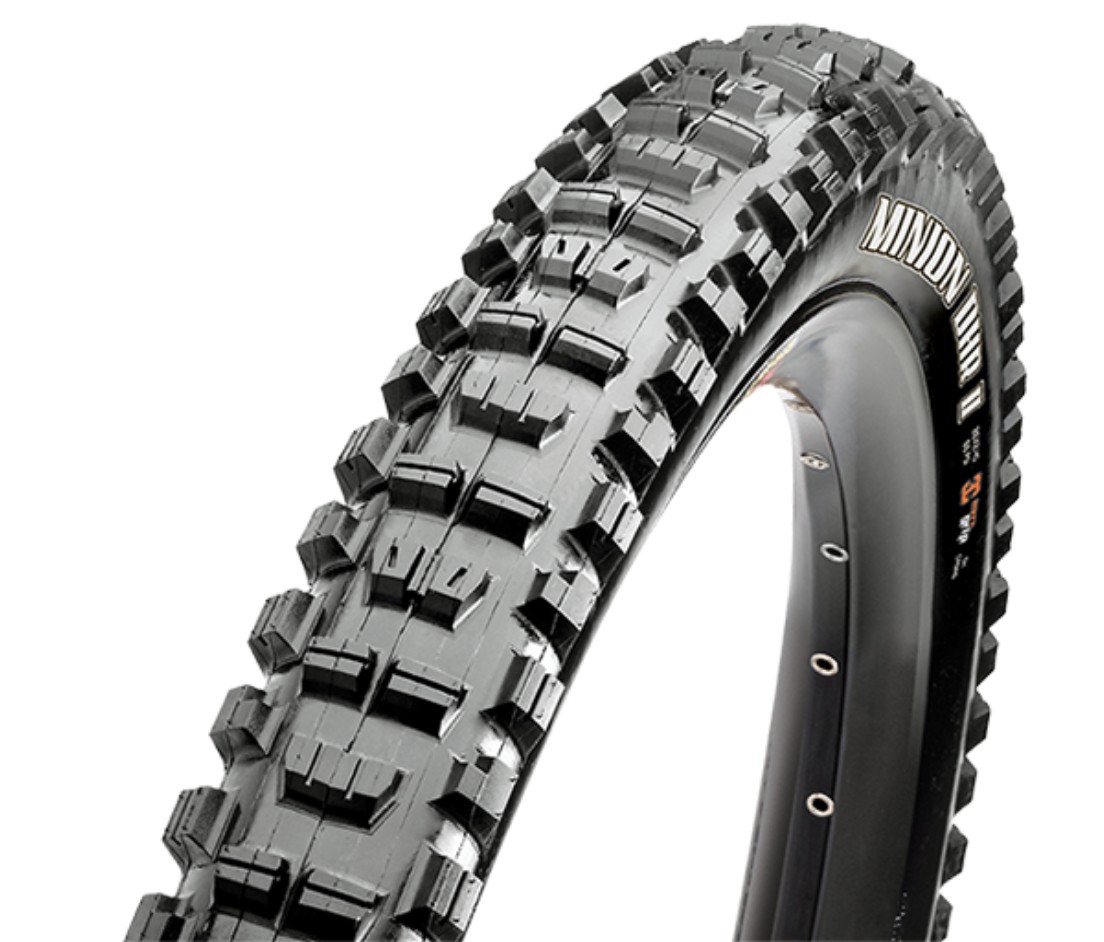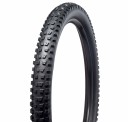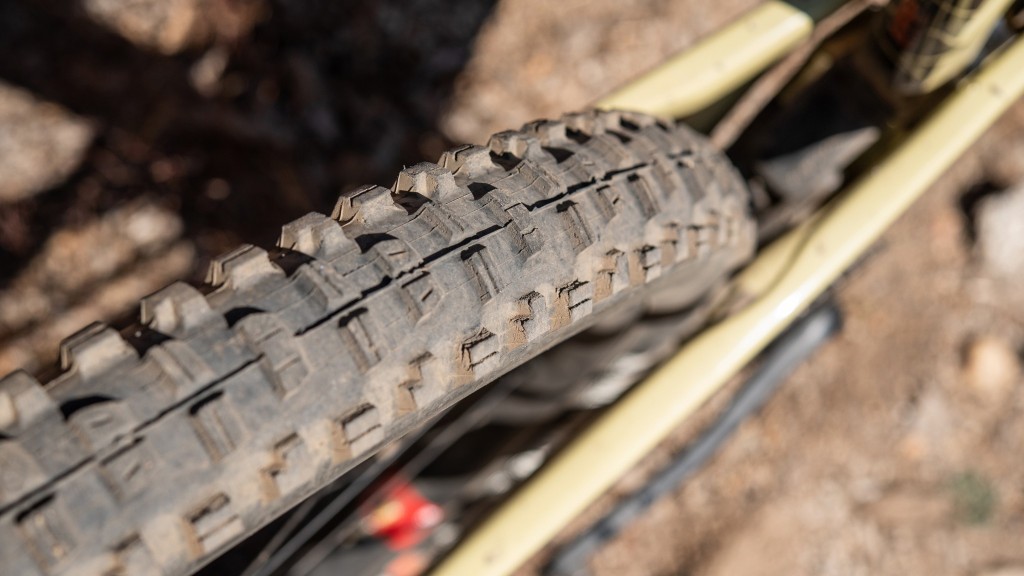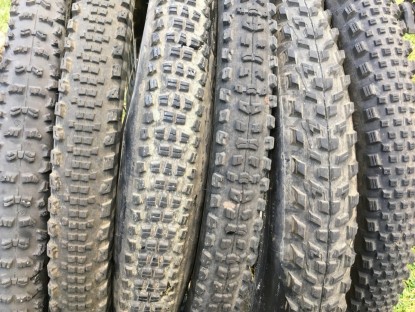Maxxis Minion DHR II Review
Our Verdict
Compare to Similar Products
 This Product
Maxxis Minion DHR II | |||||
|---|---|---|---|---|---|
| Awards | |||||
| Price | $61.50 at Evo Compare at 4 sellers | $61.50 at Evo Compare at 4 sellers | $70 List Check Price at Backcountry | $49.99 at Evo Compare at 4 sellers | $70 List Check Price at Backcountry |
Overall Score  |
|||||
| Star Rating | |||||
| Bottom Line | An aggressive rear tire that lives up to its prestigious moniker | Step up your game and start leaving your friends in the dust | Same great value, but improved grip and performance with a new rubber compound | A killer rear tire that does it all well | A versatile semi-aggressive rear tire with well-rounded performance and a reasonable price |
| Rating Categories | Maxxis Minion DHR II | Maxxis Minion DHF 3... | Specialized Butcher... | Maxxis Aggressor 2.... | Specialized Elimina... |
| Cornering (25%) | |||||
| Pedaling Traction (20%) | |||||
| Braking Traction (20%) | |||||
| Rolling Resistance (15%) | |||||
| Longevity (15%) | |||||
| Installation (5%) | |||||
| Specs | Maxxis Minion DHR II | Maxxis Minion DHF 3... | Specialized Butcher... | Maxxis Aggressor 2.... | Specialized Elimina... |
| Size tested | 27.5" x 2.4" | 29" x 2.5" WT | 29" x 2.6" | 29" x 2.5" WT | 29" x 2.3" |
| Weight as tested | 917g | 954g | 1123g | 950g | 945g |
| Front, Rear, or Both | Rear, Both | Front, Both | Front, Both | Rear | Rear |
| Casing Tested | EXO | EXO | GRID Trail | EXO | GRID Trail |
| Compound Tested | 3C Maxx Terra | 3C Maxx Terra | Gripton T9 | Dual | Gripton T7 |
| Bead | Folding | Folding | Folding | Folding | Folding |
| Tread Count (TPI) | 60 | 60 | 60 | 60 | 60 |
Our Analysis and Test Results
When it comes to mountain bike tires for trail riding, people are basically divided into two camps, those who ride Maxxis Minions, and those who ride something else. Much like the Minions from the Despicable Me movies, Maxxis Minion tires are here to do your bidding, assuming that is smashing trail. Several years ago, Maxxis was making a Minion DHR that people didn't really seem to love. When they introduced the DHR II, however, people quickly took to the new and improved version and it is now seen on the back end of a lot of people's trail bikes. We tested the Minion DHR II primarily as a back tire, although like most tires it can be used as a front as well, and put it through its paces on the rough, rocky, and loose conditions found in Lake Tahoe in the summer months.
Performance Comparison
Cornering
Maxxis Minion tires have a bit of a cult following and this is largely due to their excellent performance in the corners. The row of stout alternating rectangular and L-shaped side knobs, similar to those found on the Minion DHF, is mostly responsible for their kung-fu grip when tipped on edge, as is the softer rubber compound of the 3C MAXX TERRA version we tested.
Cornering on the DHR II is confidence-inspiring and quite predictable. The tire has a round-ish profile and when you tip the tire from the center knobs to the side knobs as you initiate a turn it has a pretty seamless transition, without the dead spot or drifty feeling that some other tires have. Once on edge, the side knobs bite and hold with no squirming or vague feeling about it. Some of their confident cornering ability is thanks to the supportive sidewalls that don't feel like they want to fold or roll even under the heaviest of G-forces. We played around with our pressure a bit while testing the DHR II and found that the sidewalls remained supportive down to around the 20psi mark, the lowest we were willing to go without fear of pinch flatting, further enhancing their traction in cornering situations.
Pedal Traction
It can certainly be used as either a front or rear tire, but the DHR II was designed primarily for use in the rear. As a rear tire, it provides loads of pedaling traction thanks to their center knob tread design. The large and widely spaced center tread has an alternating pattern of wide paddle-shaped knobs that do a great job of digging in and biting under pedaling forces. These knobs also have sipes which spread and grab even more on hard dirt and smooth rock.
The rubber compound of the 3C MAXX TERRA version we tested further enhances its traction on hard surfaces, while the big lugs dig into the loose stuff very well. Of course, this tread design that offers such great pedaling traction does result in a slight decrease in rolling resistance, so that's a tradeoff you need to consider. Other tires, like the Maxxis Aggressor and the WTB Vigilante, have a similar level of pedaling traction, but can't quite match the braking abilities of the DHR II.
Braking Traction
The Minion DHR II is big on traction, and this is especially true for its braking traction. The large widely spaced center tread knobs are somewhat paddle-shaped with ramped front and vertical back edges. This tread design does a great job of digging in when you want to slow down.
Combine the tread design with the relatively soft rubber of the 3C MAXX TERRA version we tested and this tire has great braking traction on all surfaces, from loose and sandy to hard-packed dirt and rock. Not surprisingly, this design works much better for braking than the semi-slick tires we tested like the Specialized Slaughter Grid which has a much lower profile center tread and consequently less bite when the brakes are applied.
Rolling Resistance
As is to be expected of a tire with a tread as big and aggressive as the Minion DHR II, it has a bit more rolling resistance than some of the competition. Testers found, however, that it wasn't quite as bad as they would've thought. On paved and hard surfaces, the tire actually rolled relatively quietly despite the tall and widely spaced center tread. On the trail, the ramped front edges of the center tread knobs help to ease them into the dirt as you roll, and it moves right along relatively efficiently.
Riders looking for the fastest rolling tires will want to look at competitors like the eThirteen Semi-Slick or the Specialized Slaughter Grid, but be aware that they are a step down in pedaling and braking traction. People looking for the middle ground will want to check out the Maxxis Aggressor which has slightly less rolling resistance than the DHR II but provides more traction than the semi-slick fast rollers.
Longevity
Throughout the course of our testing, we've found the Minion DHR II to be as durable as we'd expect. Our test tire is the 3C MAXX TERRA rubber configuration that features medium compound rubber for the center tread with a softer compound for the side knobs and harder rubber underneath for support. The rubber on the DHR II is quite tacky, but the result is that it tends to wear a little more quickly than a harder density. We noticed that after roughly 50 miles of hard trail riding the inside edges of the side knobs were starting to show some erosion and pitting from hard cornering. This is to be expected, but in the case of the Maxx Terra compound, you sacrifice a little in the way of tread life for outstanding grip. The DHR II is also offered in a Dual compound that has slightly denser rubber on the side knobs, and will extend the tread life when used as a rear tire.
The Minion DHR II we tested uses Maxxis' EXO casing. This is a 60 TPI casing that has an extra layer of cut and abrasion-resistant material added to the sidewalls for enhanced durability. Testers have used Maxxis EXO tire for years, mostly with good results, and our test tire proved to withstand all of the abuse we could throw at it. Our DHR II made lots of contact with sharp rocks and we scraped the sidewalls plenty with poor technique through technical rock gardens, they are holding strong with no pinch flats or premature sidewall wear to speak of. For those of you who are especially hard on tires, Maxis also offers their tires in Double Down, a 120 TPI casing with even more puncture and tear resistance.
Installation
Installing the Minion DHR II wasn't the easiest in the test, but it wasn't far off. Getting the tire on the rim was done mostly by hand, but required the use of a tire lever to slip the last part of the bead over the rim. Once the tire was on the rim, seating the bead was done with a floor pump. It didn't instantly start inflating like the Specialized Butcher Grid and Slaughter Grid, a few hard pumps were required to get it started before it complied with our wishes. It did seat up quite easily though, so those of you who swap your own tires at home should be able to manage the DHR II without the use of a compressor or additional frustration.
Value
These days you can almost always find tires online for less than their retail price. This is a good thing because at its retail price, the Minion DHR II will set you back quite a few bucks. That said, if you're looking for a great rear tire for aggressive trail riding, we still think it's a good value considering the performance this tire delivers. If you're concerned about tread life, get the Dual compound for a tiny decrease in traction and an increase in longevity.
Conclusion
As you've probably already surmised by our glowing review of the Minion DHR II, we're pretty big fans of this tire. We think you'd be hard-pressed to find a better option for a rear tire for aggressive everyday trail riding. The combination of cornering confidence and pedaling and braking traction is hard to beat. There are faster rolling tires out there, but few that can dominate the trail like the DHR II. Mount this up as a rear tire with a Minion DHF up front and you've got our winning combination for aggressive trail riding.
Other Versions
The Maxxis Minion DHR II is offered in a dizzying array of sizes, tread, and sidewall options. It is available in 26", 27.5", and 29" wheel sizes in 2.3" and 2.4"WT widths. It is also available in a 2.6" width for 27.5" wheels. They also have a couple tread options, like the stickier 3C MAXX TERRA (tested), or the slightly longer lasting Dual Density rubber. You also have options for the casing with the 60 TPI EXO being the most common, or the heavier and much burlier 120 TPI Double Down for those who abuse their tires.















